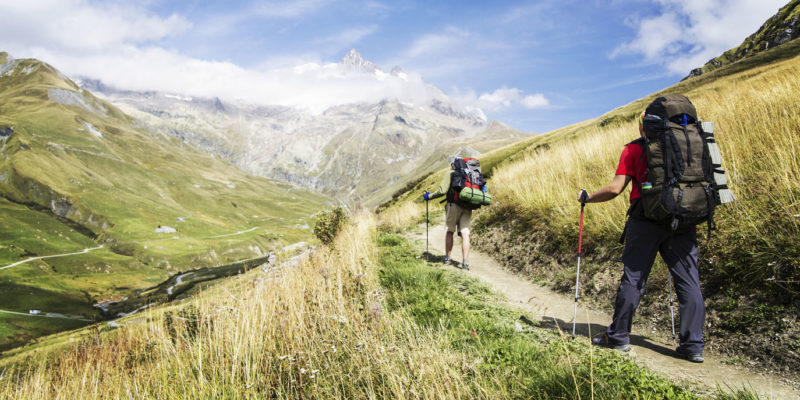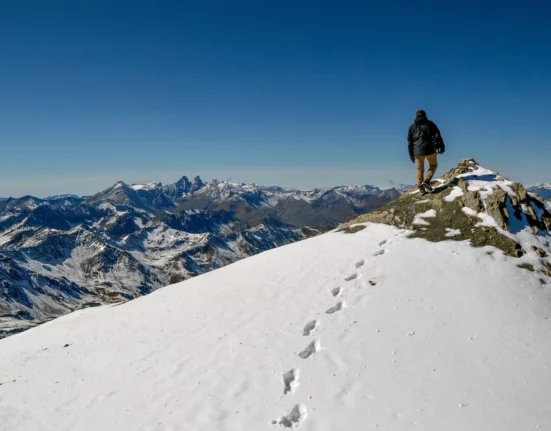Since the dawn of time, man has used some form of a pack to carry things like fresh killed game back to his base or home. Putting the load on his back allowed him to carry a larger load than if it were just in his hands. Gradually, over time, and frequently dictated by the needs of soldiers in the field, the backpack evolved from a simple open sack to the complicated external and internal frame backpacks of today. During the Revolutionary War, there was a combination of simple knapsacks and bags that were carried more like a large purse, slung over the shoulder. By the time of the Civil War, soldiers carried their gear on their backs in a simple knapsack with straps over both shoulders and the weight of the load carried on the shoulders.
A chest or waist band was sometimes used to keep the load tighter to the body. The actual term, “backpack” didn’t come into use until 1910. The basic design didn’t change until 1920, when Lloyd F. Nelson developed the wooden pack board for backpacks. This innovation both stabilized the load and moved it away from the body. The pack board eventually evolved into the external frame backpack we know today. The frame is now made of aluminum or other lightweight material. It also has a waist belt that shifts the weight of the load to the hips, which are better suited, and stronger, than the shoulders, for carrying the weight. In 1967, Greg Lowe invented the internal-frame backpack that moved the entire load to the hips.
The activity that we know today as “backpacking” began to become popular after World War II and was given a big boost in 1968 by the passage of the National Trails System Act of 1968, along with National Scenic Trails and National Historic Trails. The first trails to be so designated in 1968 were the Appalachian National Scenic Trail and the Pacific Crest National Scenic Trail. These trails, and many others, both federal and state sponsored, have made it relatively easy to get out into the wilderness.
Today, backpacks come in three basic types:
- Daypacks
- Internal frame backpacks
- External frame backpacks
Daypacks are used for single day trips, whether a hike, climb, or bike ride. They are frameless and are intended for light loads. They are lightweight and usually include a strap at waist level to hold the pack tight to the body so it won’t bounce around with each stride. They are also frequently used as book bags by students. They generally have a capacity of less than 2,500 cubic inches (40 liters).
External frame backpacks, whose origins date back to the 1920’s with the original pack board packs, are used for large loads. They are best suited for walking on trails, rather than climbing or skiing. The pack sack itself is attached to an aluminum frame that keeps it away from your body. The frame also accommodates things like sleeping bags attached outside the pack sack. The pack sack usually has several outside pockets to more easily organize your equipment. External frame backpacks have a higher center of gravity than the internal frame pack which allows for good weight transfer to the hips and a more upright posture than is possible with a fully loaded internal frame pack. It also allows for better air circulation between the pack and your back, which can make a difference in hot weather.
Internal frame backpacks hug your back – clasping the load next to your backbone. They are “worn”, rather than carried and need proper fitting for comfortable use. The internal frames are made of aluminum stays, plastic frame sheets, curved Dulrin rods, or a combination of those things. The length of your back determines the size internal frame backpack you wear. The hip belt is also of prime importance, since this where the weight is carried. Since internal frame packs are narrower and fit closer to your back than the external frame packs, they are better suited for activities that require the use of your arms and also a tight center of gravity. Bushwhacking, climbing, or skiing are examples of the type of activity where an internal frame pack is the better choice. For hot weather backpacking, there are “ventilated” internal frame backpacks that have a breathable mesh across the frame that allows air to circulate between the pack and your back.
There are three general categories of backpacks based on the capacity of the pack.
Weekend packs have a capacity of 2,500 to 3,999 cubic inches (40 to 65 liters). They are designed to hold everything needed for a weekend in the backcountry.
Weeklong packs have a capacity of 4,000 to 5,999 cubic inches (65 to 95 liters). They can carry whatever you need for an entire week in the wilderness.
Expedition packs have a capacity of greater than 6,000 cubic inches (95 liters). They are intended to carry extra gear, over and above what is in the weeklong pack, like mountaineering equipment or bear canisters (sealed food containers needed in bear country).
There are also separate categories of backpacks for men and women. Because of the difference in male and female anatomies, the better-quality backpacks are adapted to fit these differences. For more go to Legear.






